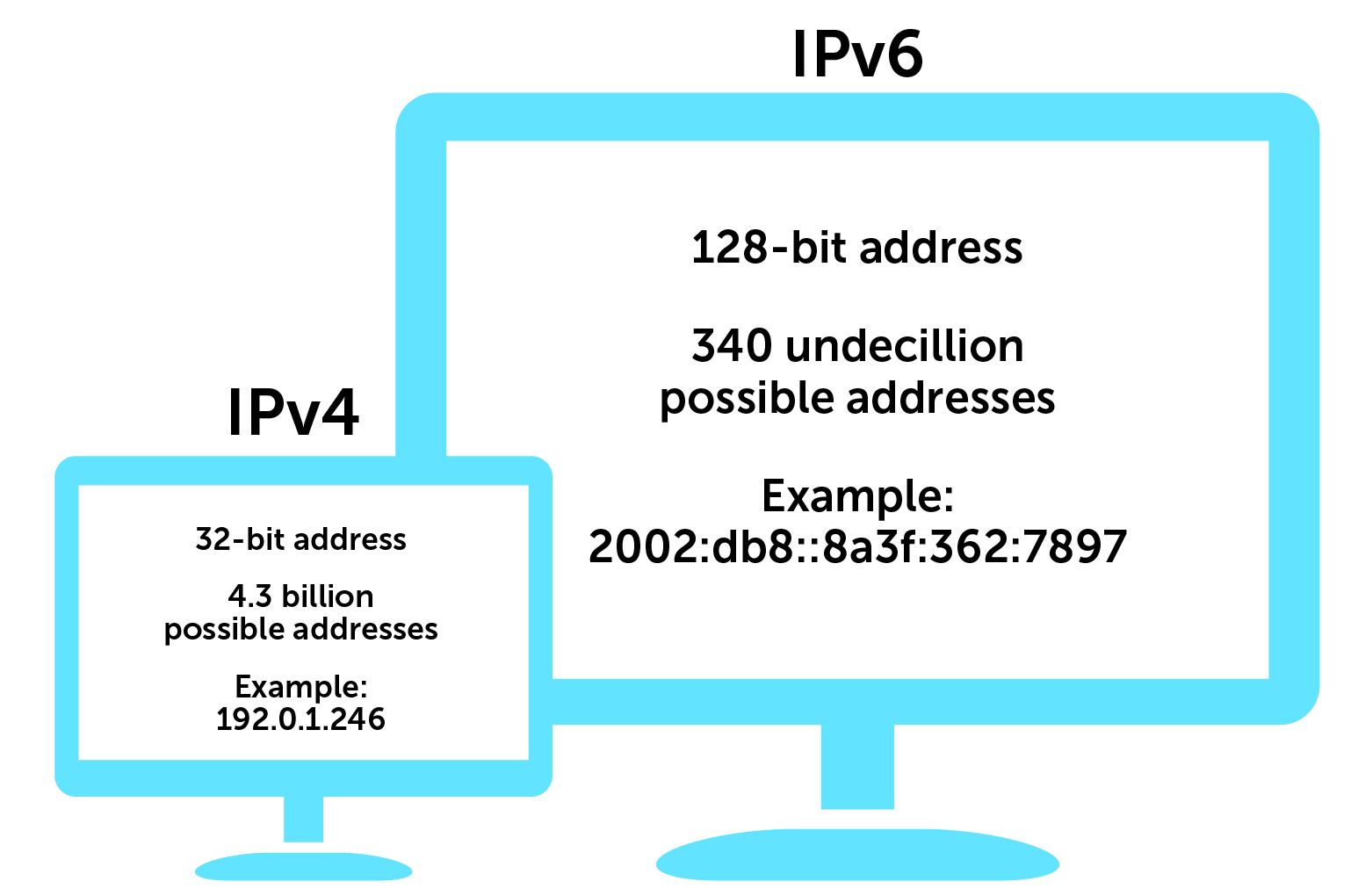Internet Protocol version 6 (IPv6) is an Internet layer protocol for packet-switched internetworking and provides end-to-end datagram transmission across multiple IP networks, closely adhering to the design principles developed in the previous version, Internet Protocol version 4 (IPv4). IPv6 is the replacement for IPv4 – the most widely used and supported Internet protocol.
IPv6 was initially developed in response to the needs for the faster networking capacity that was outstripping earlier protocols. With its support of larger address spaces and more address fields, IPv6 is able to accommodate the proliferation of networks and networked devices that have arisen since the widespread adoption of IPv4, such as mobile phones, Internet of Things (IoT), and cloud computing.
IPv6 also enhances the security of Internet communications. For example, the inclusion of IPSec (Internet Protocol Security) and the use of Secure Neighbor Discovery (SEND) provide additional layer of protection to help secure communication.
IPv6 does not replace IPv4. The two protocols are designed to work together, and both are necessary for efficient operations on the Web. However, while IPv4 is highly efficient at carrying traffic, its lack of scalability means that it is limited in terms of how much data can be transmitted. This is why IPv6 was designed to expand the ability of networks to carry data and why it is increasingly being adopted by companies, organizations, and individuals looking for better, faster, and more secure networking capabilities.





